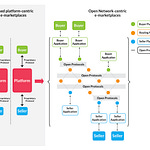We at the Takshashila Institution like to begin with first principles. Since the beginning of our High Tech Geopolitics Programme, we’ve pondered the key ideas and approaches that ought to inform our approach to the subject. After many discussions, message threads, and chats over lunches, we’ve distilled our thoughts into a short and crisp Techno-Strategic Doctrine. This doctrine provides a foundation which India’s policy wonks and policymakers can use as they craft domestic and international technology policy for the Information Age. Like the lighthouse that graces our institution’s emblem, we hope this doctrine illuminates our path forward and helps us navigate the perilous shoals that undoubtedly lie ahead.
The Techno-strategic Doctrine has been written in recognition of two important factors:
First, technology has become instrumental in augmenting the national power of states. The development of advanced technologies can help states achieve their national goals.
Second, the creation of technological capabilities, their use and control are highly conducive to cooperation, contestation and conflict along geopolitical lines.
In recognition of these factors, the Techno-Strategic Doctrine lays down the path that India must take to pursue technological excellence and become a major power in the global order:
Policymakers and analysts alike must recognise India’s comparative advantages in scientific and technological development, namely a large talent pool and relatively low-cost labour.
India must pursue international cooperation with the goal of widening access to scientific knowledge, critical supply chains, and advanced technological capabilities.
India’s technology policy must align with and enshrine the values of the Indian Constitution and the UN Charter.
The doctrine is divided into three sections. The Preamble encompasses the principles and values that guide the rest of the doctrine. The section on Objectives sets the goals that the doctrine must achieve. Finally, the section on Approaches explains what India must do, domestically and internationally, to become a global technology power.
We’d love to hear your thoughts on the doctrine. You can find the PDF version here.
A Techno-strategic Doctrine for India
— Takshashila’s High Tech Geopolitics Team
Preamble
1. Technology is crucial for India’s development in the Information Age. It is also an important element of national power. The acquisition of advanced technologies is not an end in itself but a means to bring peace and prosperity to all Indian citizens. Unhindered access to state-of-the-art and foundational knowledge is, therefore, in India’s national interest.
2. India seeks a global environment where technology is accessible to humanity. It will also promote a global order where technology strengthens the values enshrined in the Indian Constitution and the UN Charter.
3. India shall strive for effective technology governance that can contribute to all aspects of human development.
4. India must be prepared for cooperation, competition, and conflict in the areas of knowledge creation, human capital, influence, raw materials, and norms.
Objectives
1. To establish India as a major power in international affairs.
2. To invest in the development of advanced scientific and technological capabilities in the public, private, and social sectors.
3. To harness India’s capabilities in the technology domain to achieve national goals.
4. To promote sustainability by using technology.
5. To ensure that technology empowers citizens and safeguards constitutional rights.
Approaches
1. Since human capital is India’s biggest strength, it will strive to maintain the largest talent pool in every technological sector.
2. India will advocate the free movement of people, knowledge, and capital across national boundaries.
3. India will adopt governance frameworks that enable research and development, early deployment, and adoption of technological innovation.
4. In order to protect its strategic autonomy in the technological domain, India will champion open technologies.
5. India will possess top-tier capabilities for information warfare.









